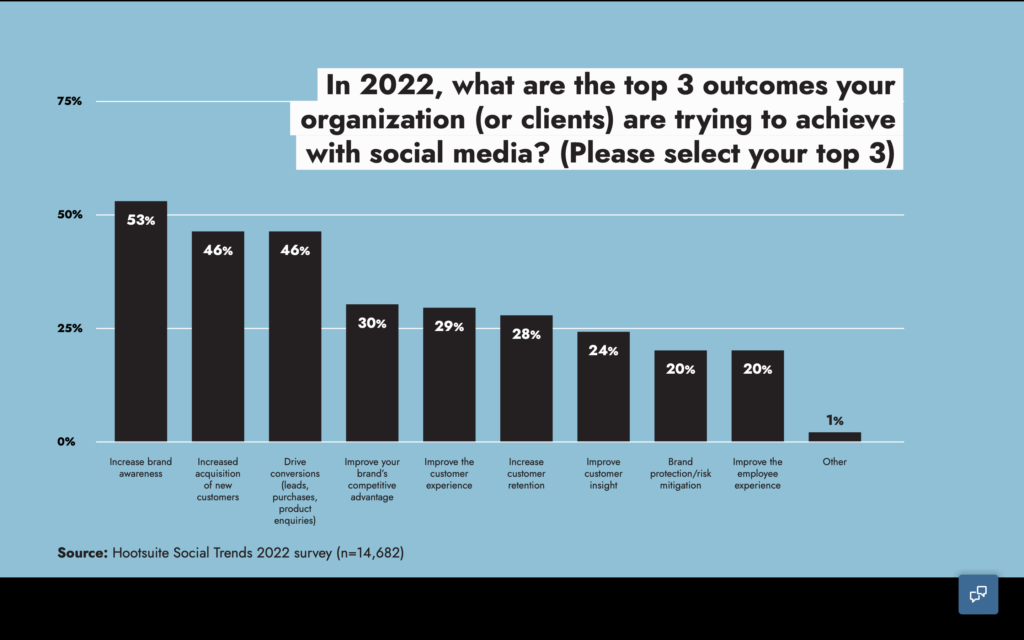For better social listening outcomes, stay tuned to your audience over time
High impact social listening is less about a snapshot report and more about an ongoing commitment to studying your communityRevmade regularly scours the internet for new studies that offer important insights for marketers. Then we write them up for you in as few words as possible. (Want to get them emailed to you? Sign up here.)
As a rule, top-performing marketers prioritize their audience’s needs. But developing a true understanding of those needs can be a complex task that can never truly be completed, because audience needs shift. One of the most effective ways to learn is to get inventive with your approach to audience research — listening to audiences and watching the shifts in what they need, how they interact, what words they use — over time.
That last part – over time – is crucial. It’s easy to make the mistake of thinking that audience intelligence is a one-off snapshot report that can be run versus an ongoing commitment to learning and understanding your community in order to better serve it. So when we saw recent research on the state of social media, one slide in particular caught our eye: marketers were ranking “Use social media to gain audience insight” as the 7th top outcome they desired out of social media initiatives in 2022.

While #1-#6 are noble goals (things like “Increase brand awareness” and “Acquire new customers”), the truth is that all aspects of social media marketing can be improved by making audience intelligence your #1 priority. The learnings can help to shape decisions made on all other fronts that can drive improved results from an efficiency and effectiveness standpoint.
How social listening for audience intelligence drives a culture of community-centricity at your brand
Beyond the obvious benefit of uncovering audience needs and new opportunities, regularly listening to audiences in areas where they’re already communicating helps brands to:
- Get immediate feedback that can help improve current products and services. Social listening is an excellent way to uncover unprompted feedback— with both positive and negative sentiment. Existing comments are instant data points that can help make a case for change within an organization, whether it’s for content, digital products or customer service.
- Gain a deeper understanding of their competitive position. It’s one thing to monitor a competitor’s website. It’s another to understand how the audience perceives them. Understanding an audience’s perception of a competitor’s brand can lead to positioning that’s better in line with audience needs.
- Remain relevant. The pace of change is quick – and if a brand fails to stay ahead, or at least keep up with what is important to their audience, they’ll find that yesterday’s best practice is today’s best-to-avoid-it. If a brand is tuned into what its audience is up to, and responds accordingly, there’s less risk of becoming irrelevant.
How you can level up:
Agreeing in principle is a strong step one, but successful organizations prioritize the following:
- Build consensus internally about the value of learning and adhering to community rules. Audiences typically self-organize into online and offline communities that have their own ways of communicating. These authentic relationships are built on trust and common interests, and brands who don’t fully understand how they operate and what they care about run the risk of looking out of touch when they do engage. The first step to realizing value from listening is to build an appreciation and respect for how audiences want to communicate and where they see value.
- Build a system to achieve a continuous listening-and-integration approach. Listening goes far beyond monitoring for brand mentions on social media, and it can be a complicated, time-intensive effort at a level where you actually see results. To consistently study your audience, ensure you integrate social networks large and small (forums are typically an overlooked place where niche communities gather, for example), monitor competition for successful and unsuccessful efforts to connect, research market and industry trends, invest in first-party analytics and more. Your organization needs to have its fingers on the pulse of your audience to create and refine product and marketing strategies that resonate with them.
- Invest in ongoing audience intelligence. Without the right tools and methodologies to source, capture and utilize numerous sources of data, listening can be overwhelming and rich insights can be overlooked or lost. Marketers need to invest in data sources and analysis — especially “what do I do with this information now?,” which tends to be the most difficult. As your system matures, your team can feel confident that no insight will be left behind – further increasing your brand’s ability to earn your audience’s attention and trust.
TL;DR: Top-performing organizations understand that when it comes to audience intelligence, it’s not about generating reports, it’s about plugging in and staying tuned. They realize that success comes from an ongoing commitment to studying the whole context in which their audience lives versus moment-in-time snapshots.
Curious about what topics are resonating in the communities you serve? Want an overview of the authentic, water cooler conversations among your audience? Reach out to us for more info.
Subscribe
Get our weekly newsletter for tips on how to drive better content marketing performance.
For a regular stream of ideas, research and links we find helpful. And of course, to say hi!
